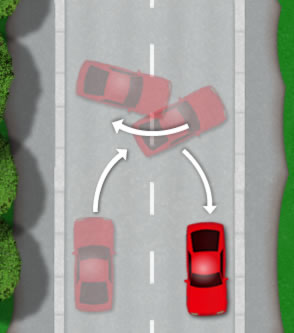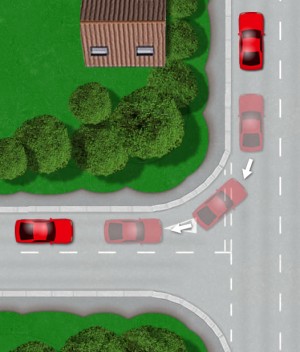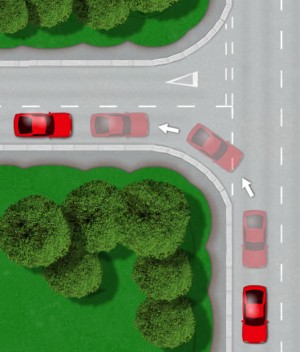The practical driving taxi test set out by the Driver and Vehicle Standards Agency (DVSA) is compulsory for many of the councils within the UK.
What is a taxi test manoeuvre? The taxi assessment test for private hire or black cab has a section where the examiner will ask you to stop the vehicle on the left and explain that they require you to turn the vehicle round to face the opposite direction.
The taxi test manoeuvre can be made using various methods, where the most common are detailed below. Whichever method you choose depends on the the layout of the road and what options you have available to work with.
To complete the taxi test manoeuvre to a standard acceptable for the examiner, you’ll need to demonstrate a high level of control of the vehicle and consideration for other road users and pedestrians.
Turn in the Road
The turn in the road is a method frequently used during the test. The manoeuvre can be completed in three or more turns.
Frequent areas of test failure during the turn in the road is a lack of appropriate observation. Ensure that you are continuously looking around in all directions and if necessary, stop so that you do not impede other road users or pedestrians. Allow other vehicles to pass if they wish, or if they stop to allow you to complete the manoeuvre, you may continue.

Steering quickly to full lock is essential for small turning angles, but it’s important that you avoid hitting or bumping kerbs as this can fail your test. Never mount a pavement at any stage of the taxi test as this will result in a failure. Before reversing, always look out the rear window in the direction of travel before moving the car.
Left or Right Junction Corner Reverse
Another method of turning the vehicle around is to reverse into a side road via a junction. As can be seen in the diagrams, this can be completed by either reversing left or right into a side road.


A similar procedure should be maintained as the turn in the road in that a steady pace, continuous all-round observation and excellent control of the vehicle throughout.
Remember, as your vehicle begins to round the corner, the front of the vehicle will protrude into the road. At any stage, and particularly this stage, you may need to stop the vehicle so not to impede other road users.
Pedestrians frequently cross the road at junctions. There is a higher likelihood of this during this manoeuvre. Keep a keen eye out for pedestrians and if necessary, stop to allow them to proceed.
As you round the corner, vehicle may approach from the rear. Stop to allow them to proceed, unless they stop to allow you to continue. Avoid scraping or mounting kerbs.
How fast Should a Manoeuvre be Completed?
Manoeuvres are a part of the standard learner driver test and during the ‘L’ test, candidates take manoeuvres very slowly due to the high level of vehicle control and observations necessary. The same level of control and observation is required during the taxi test, though the examiner will expect you to make the manoeuvre a little quicker due to having previous driving experience.
Only make the manoeuvre at a speed that allows for continuous all-round observation and to maintain a high level of control of the vehicle. If necessary, slow it down as safety is of priority.
